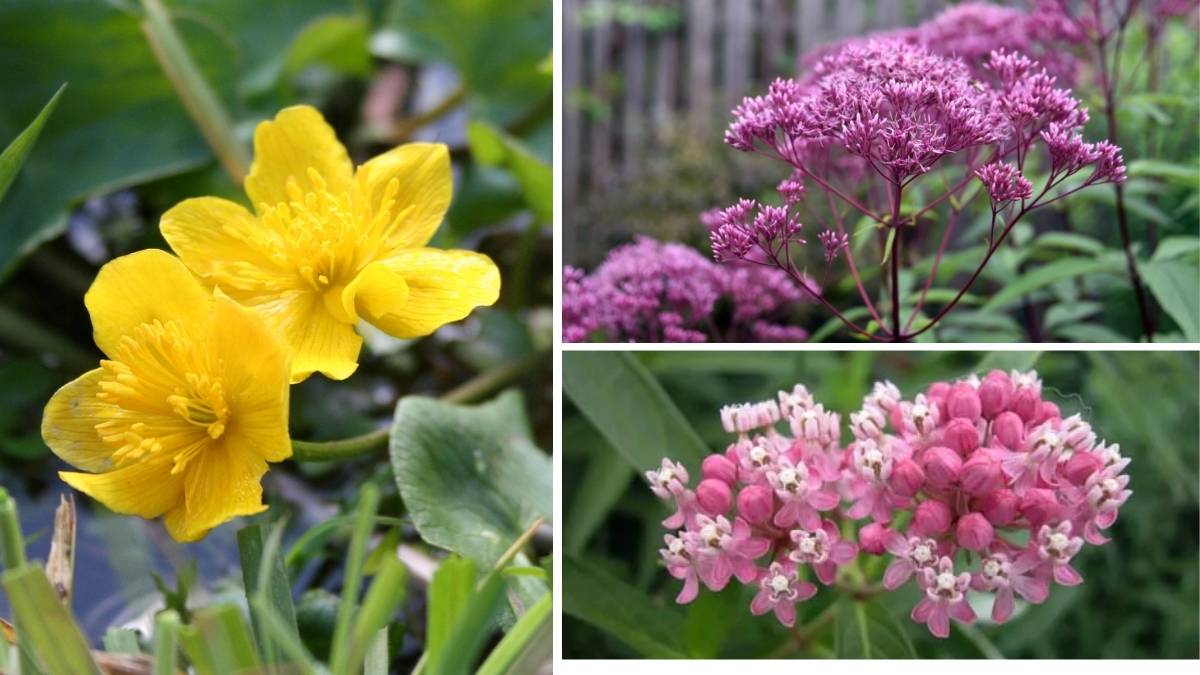Gardening can be incredibly rewarding, but not every plant thrives in soggy, waterlogged soil. For gardeners with naturally damp areas, heavy clay soil, or a rain-prone garden, choosing the right plants is crucial. Luckily, there are a variety of water-loving plants that not only survive but flourish in wet conditions, adding beauty, texture, and color to your landscape.
Whether you’re cultivating a backyard pond, a rain garden, or a low-lying soggy patch, these plants are celebrated for their resilience, lush growth, and stunning foliage.
Why Choose Water-Loving Plants?
Water-loving plants are perfect for both beginner and experienced gardeners who struggle with persistently wet areas. Here’s why they’re worth considering:
- Thrives in wet conditions: These plants can tolerate standing water or consistently damp soil.
- Low maintenance: Once established, they require minimal care.
- Attract wildlife: Many provide food and habitat for birds, butterflies, and beneficial insects.
- Versatile design options: Ideal for borders, ponds, rain gardens, or wetlands.
- Beautiful foliage and blooms: They turn soggy areas into lush, colorful garden spaces.
By selecting the right water-loving varieties, even the wettest spots in your garden can become a vibrant and thriving oasis.
1. Marsh Marigold (Caltha palustris)
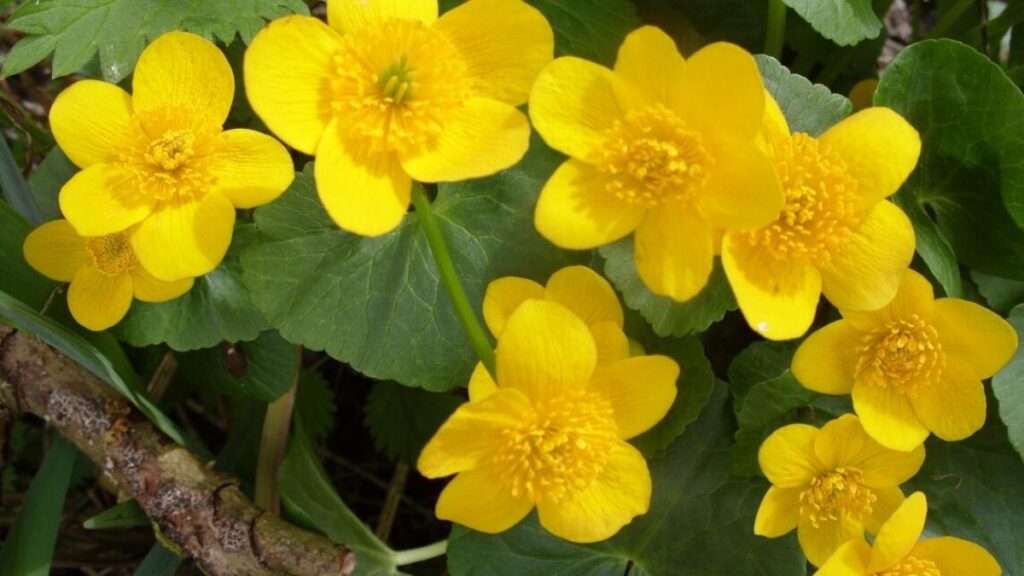
Marsh marigold is an early spring bloomer, producing vibrant yellow flowers that brighten up wet areas.
Why it thrives:
Marsh marigold naturally grows in bogs and marshes, so it handles standing water without any stress.
Planting and care tips:
- Plant in full sun to partial shade.
- Keep the soil consistently wet; it even tolerates shallow standing water.
- Divide clumps every 3–4 years to encourage vigorous growth.
Blooming: Flowers appear in early spring, adding a cheerful splash of color.
2. Canna Lily (Canna spp.)
Canna lilies are bold, tropical-looking perennials with bright flowers and large leaves that love wet soil.
Why it thrives:
These plants grow rapidly in damp or soggy conditions and can even survive in shallow water.
Planting and care tips:
- Plant in full sun for the best flowering.
- Keep soil constantly moist; they thrive in rain gardens or pond edges.
- Fertilize monthly during the growing season.
Blooming: Expect vibrant reds, oranges, and yellows throughout summer and early fall.
3. Joe-Pye Weed (Eutrochium purpureum)
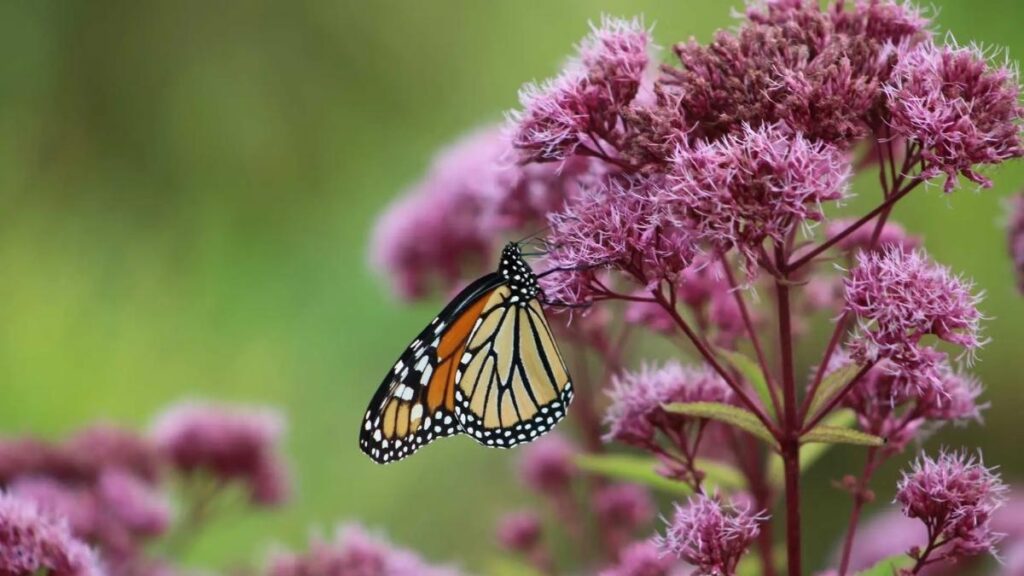
Joe-Pye weed is a tall, striking perennial with purple-pink flower clusters that attract butterflies.
Why it thrives:
It naturally grows in wetlands and along stream banks, tolerating heavy, wet soil effortlessly.
Planting and care tips:
- Plant in full sun to partial shade.
- Keep soil moist; mulch helps retain moisture.
- Cut back stems in late winter to encourage healthy regrowth.
Blooming: Flowers from midsummer to early fall, providing late-season interest.
4. Blue Flag Iris (Iris versicolor)
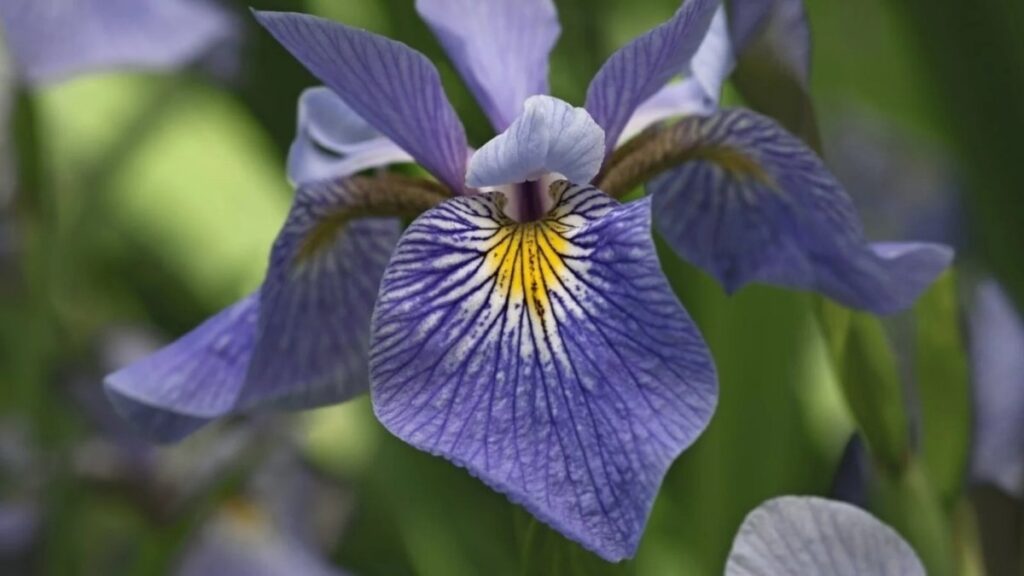
Blue flag iris is a native wetland plant with elegant blue-violet blooms and sword-like leaves.
Why it thrives:
It grows best in consistently damp soil or along pond edges.
Planting and care tips:
- Plant in full sun for abundant blooms.
- Keep soil consistently moist.
- Divide every 3–4 years to prevent overcrowding.
Blooming: Flowers in late spring to early summer, adding vertical interest to wet areas.
5. Cardinal Flower (Lobelia cardinalis)
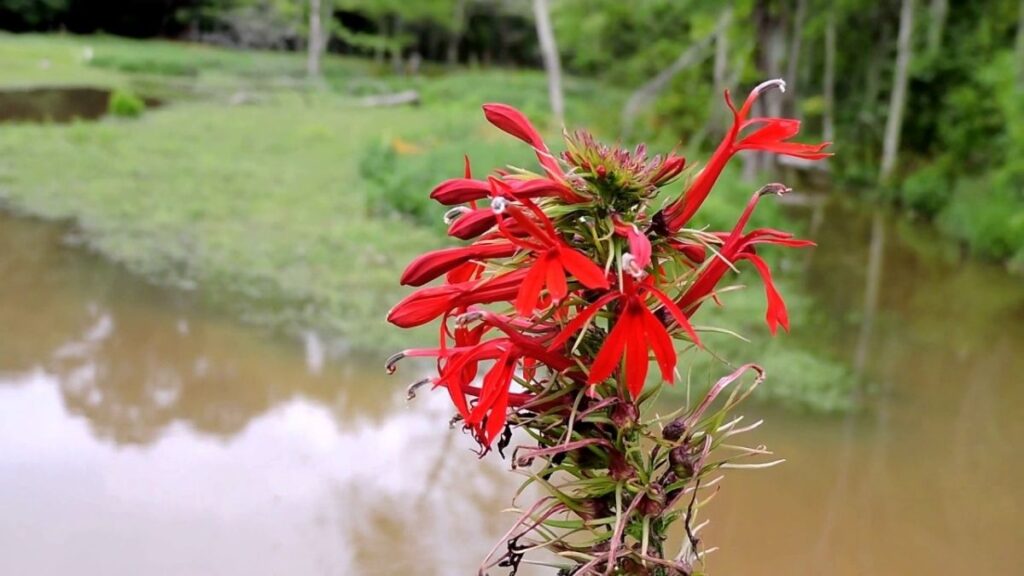
Cardinal flower is a vibrant perennial with striking red blooms that attract hummingbirds.
Why it thrives:
It prefers wet soil and is often found along streams, ponds, and marshes.
Planting and care tips:
- Full sun to partial shade works best.
- Soil should remain consistently damp.
- Pinch spent flowers to encourage prolonged blooming.
Blooming: Blooms appear in midsummer, creating a stunning splash of red in your garden.
6. Swamp Milkweed (Asclepias incarnata)
Swamp milkweed is not only beautiful but also essential for pollinators, especially monarch butterflies.
Why it thrives:
Native to wetlands, it grows strongly in wet soil and tolerates occasional flooding.
Planting and care tips:
- Plant in full sun.
- Keep the soil consistently moist.
- Deadhead spent flowers to encourage additional blooms.
Blooming: Clusters of pink flowers appear from mid to late summer.
7. Ligularia (Ligularia spp.)
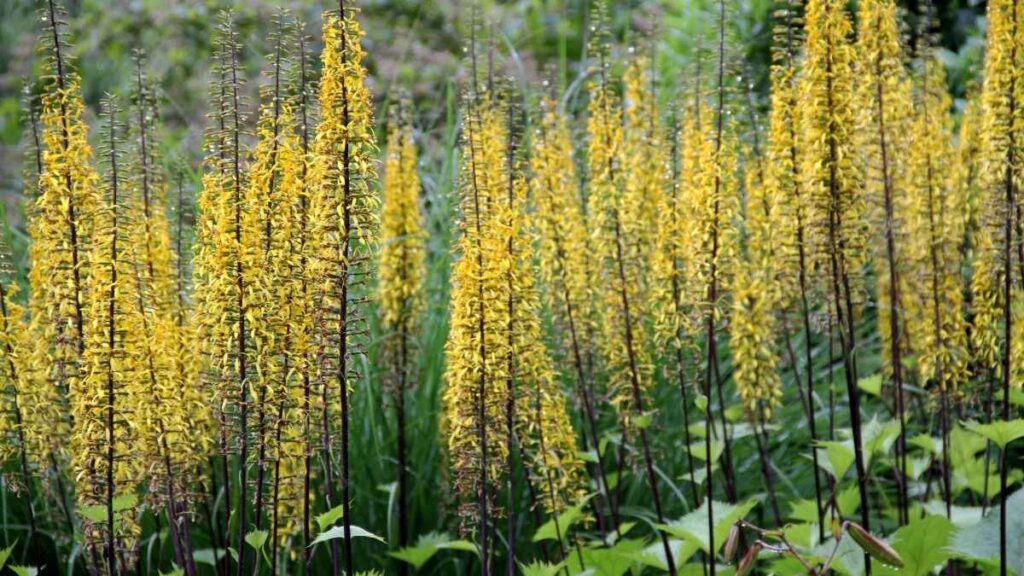
Ligularia is a shade-loving perennial with bold foliage and bright yellow-orange flowers.
Why it thrives:
It flourishes in damp, shady spots and can tolerate wet soil that many other perennials dislike.
Planting and care tips:
- Plant in partial to full shade.
- Ensure soil is moist at all times.
- Protect from strong winds to prevent foliage damage.
Blooming: Summer flowers rise above large, dramatic leaves, creating a striking display.
General Tips for Success
- Choose native wetland species whenever possible they’re better adapted to your local conditions.
- Mulch to retain soil moisture and reduce erosion.
- Avoid over-fertilizing; water-loving plants thrive naturally in nutrient-rich wet soil.
- Divide and propagate perennials as needed to maintain vigor.
- Observe for pests and diseases, although water-tolerant plants are generally hardy.
Benefits of Water-Loving Plants
- Resilient growth: These plants flourish where others fail.
- Wildlife-friendly: Attract birds, butterflies, and beneficial insects.
- Low maintenance: Once established, they require little care.
- Aesthetic appeal: Lush foliage and colorful blooms brighten damp areas.
Conclusion
Waterlogged areas don’t have to be a challenge they can become a garden’s most vibrant spots. With plants like marsh marigold, canna lily, and cardinal flower, even the soggiest soil can turn into a thriving, beautiful landscape. By choosing the right water-loving species and giving them the care they need, you can transform wet patches into flourishing, eye-catching garden highlights.

